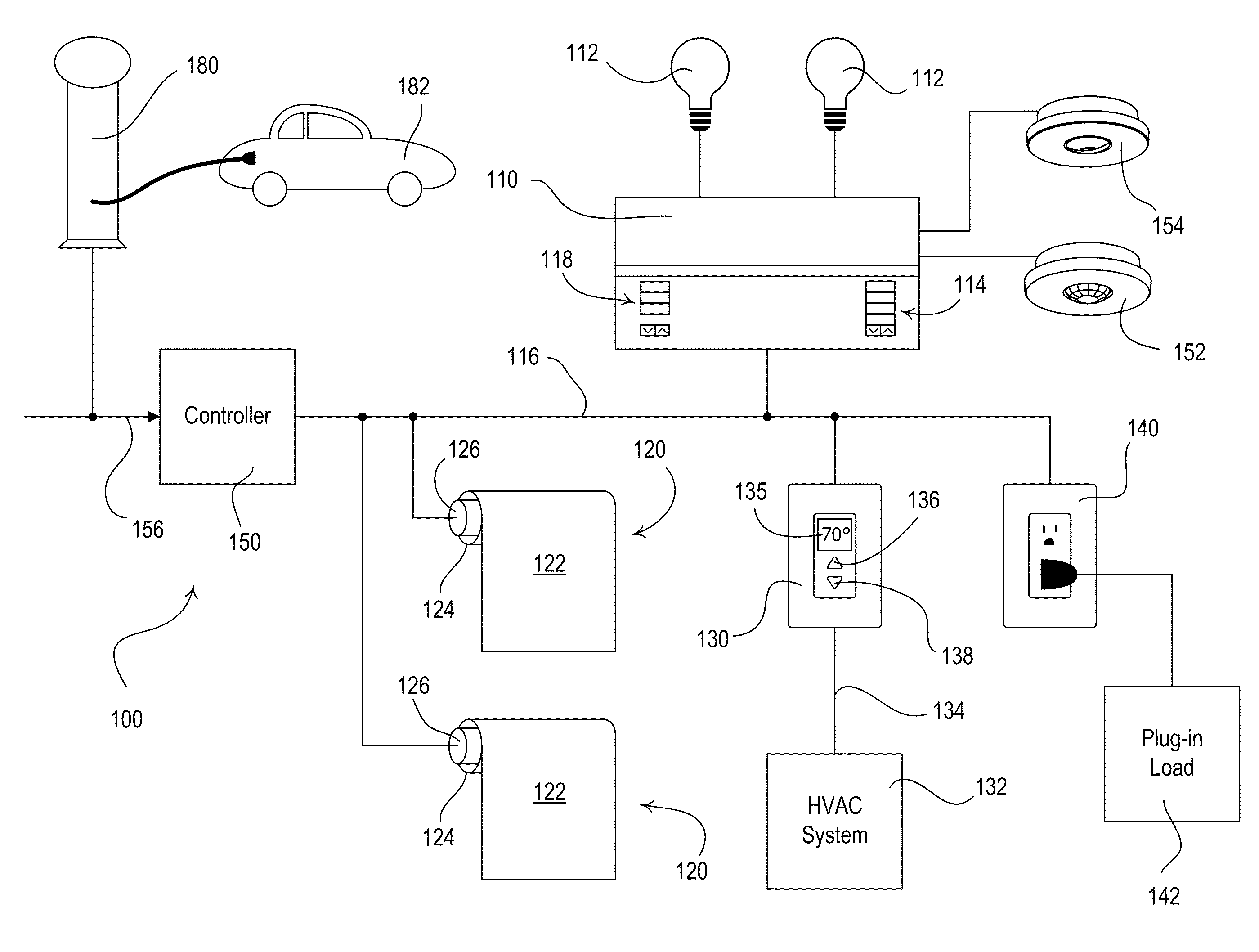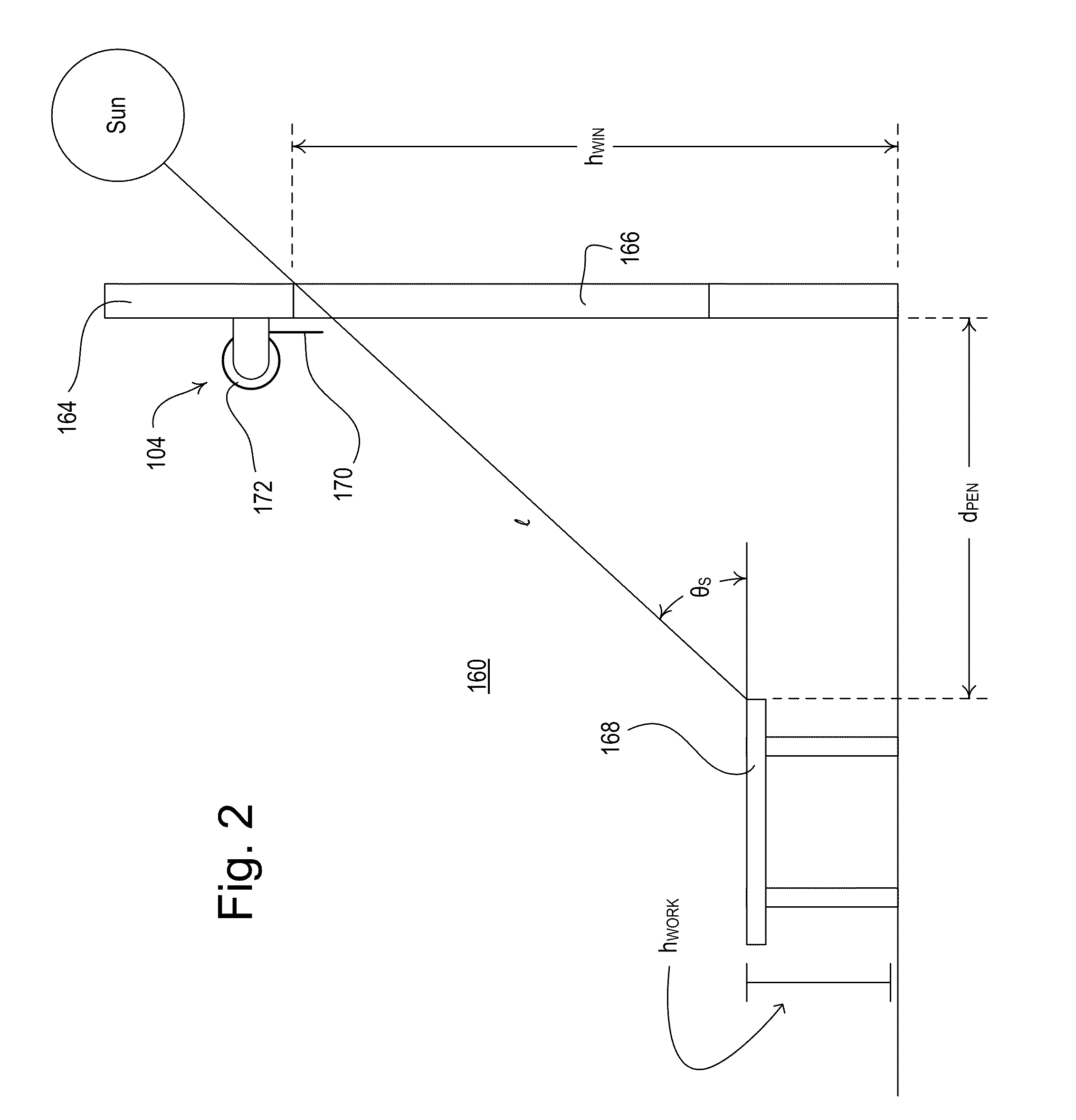Load Control System That Operates in an Energy-Savings Mode When an Electric Vehicle Charger is Charging a Vehicle
- Summary
- Abstract
- Description
- Claims
- Application Information
AI Technical Summary
Benefits of technology
Problems solved by technology
Method used
Image
Examples
first embodiment
[0055]FIG. 1 is a simplified block diagram of a centralized load control system 100 that may be installed in a building (such as a commercial building) according to the present invention. The load control system 100 comprises a multi-zone lighting control device 110 that is operable to control the amount of power delivered from an alternating-current (AC) power source (not shown) to one or more lighting loads 112 for adjusting the intensities of the lighting loads. The lighting load 112 may be located in a space 160 (FIG. 2) of the building to thus control the amount of electric light (i.e., artificial light) in the space. The lighting loads 112 may comprise, for example, incandescent lamps, halogen lamps, gas discharge lamps, fluorescent lamps, compact fluorescent lamps, high-intensity discharge (HID) lamps, magnetic low-voltage (MLV) lighting loads, electronic low-voltage (ELV) lighting loads, light-emitting diode (LED) light sources, hybrid light sources comprising two or more di...
fourth embodiment
[0075]Alternatively, the load control system 100 could comprise a visual display, such as a liquid-crystal display (LCD) screen, for providing a visual indication that the load control system 100 is operating in the energy-savings mode and for providing information regarding the total power consumption of the load control system and the amount of energy savings, as well as an indication of when the electric vehicle charger 180 is charging the electric vehicle 182. An example of a visual display for providing energy savings information is described in greater detail in commonly-assigned U.S. patent application Ser. No. 12 / 044,672, filed Mar. 7, 2008, SYSTEM AND METHOD FOR GRAPHICALLY DISPLAYING ENERGY CONSUMPTION AND SAVINGS, the entire disclosure of which is hereby incorporated by reference. In addition, the load control system 100 could comprise a dynamic keypad for receiving user inputs (e.g., dynamic keypad 1700 of the fourth embodiment as shown in FIG. 24 and described in greate...
second embodiment
[0122]FIG. 16 is a simplified flowchart of a planned demand response procedure 1200 executed by the controller 150 of the load control system 100 according to the present invention. In response to receiving a planned demand response command, the controller 150 controls the load control system 100 to reduce the total power consumption at a predetermined start time tSTART in the future, for example, at noon on the day after the planned demand response command was received. The controller 150 is operable to “pre-condition” (i.e., pre-cool or pre-heat) the building before the start time tSTART of the planned demand response command, such that the HVAC system 132 will be able to consume less power during the planned demand response event (i.e., after the start time). To pre-condition the building before a planned demand response event, the controller 150 is operable to pre-cool the building when the HVAC system 132 is in the cooling mode and will be cooling the building during the presen...
PUM
 Login to View More
Login to View More Abstract
Description
Claims
Application Information
 Login to View More
Login to View More - R&D
- Intellectual Property
- Life Sciences
- Materials
- Tech Scout
- Unparalleled Data Quality
- Higher Quality Content
- 60% Fewer Hallucinations
Browse by: Latest US Patents, China's latest patents, Technical Efficacy Thesaurus, Application Domain, Technology Topic, Popular Technical Reports.
© 2025 PatSnap. All rights reserved.Legal|Privacy policy|Modern Slavery Act Transparency Statement|Sitemap|About US| Contact US: help@patsnap.com



